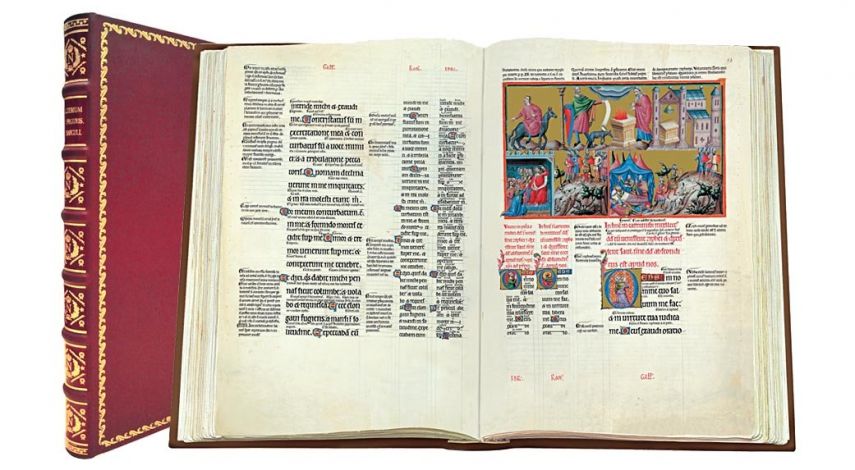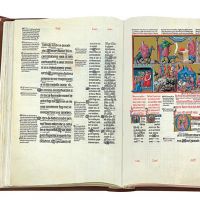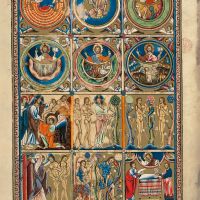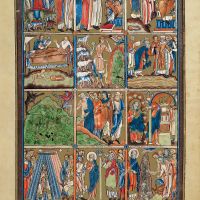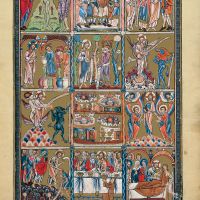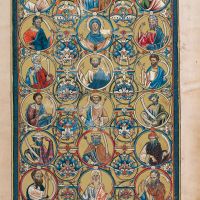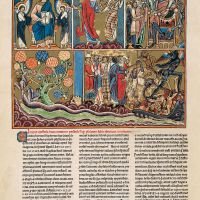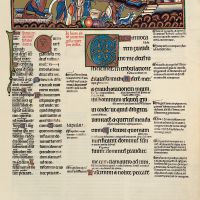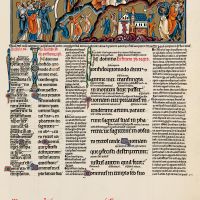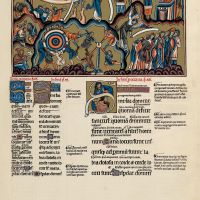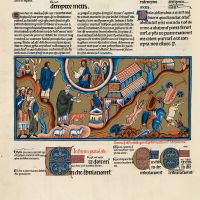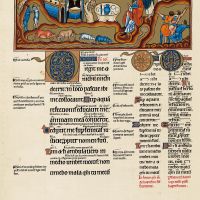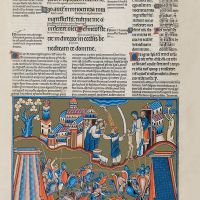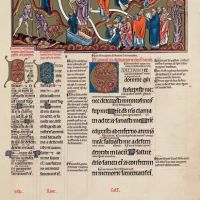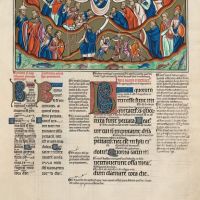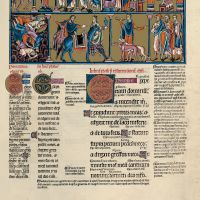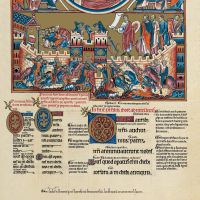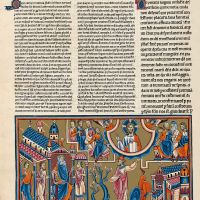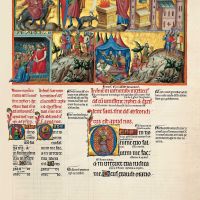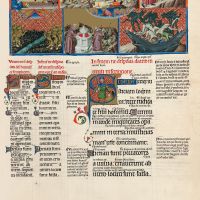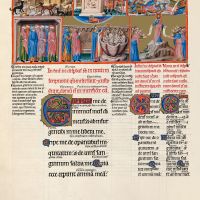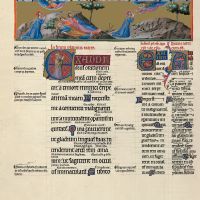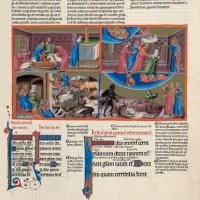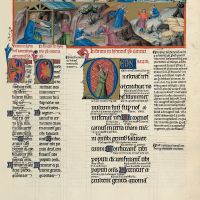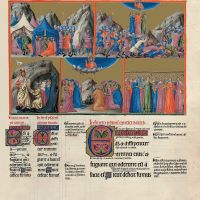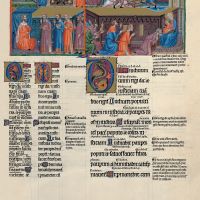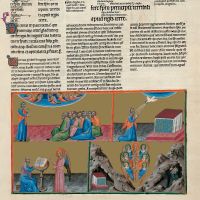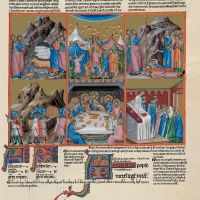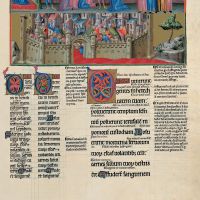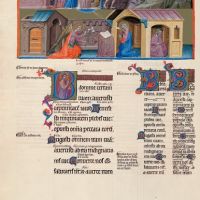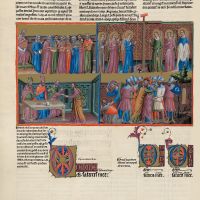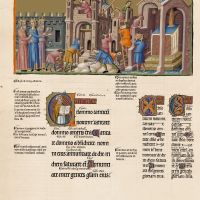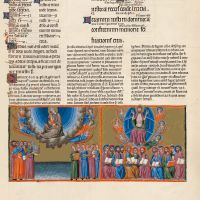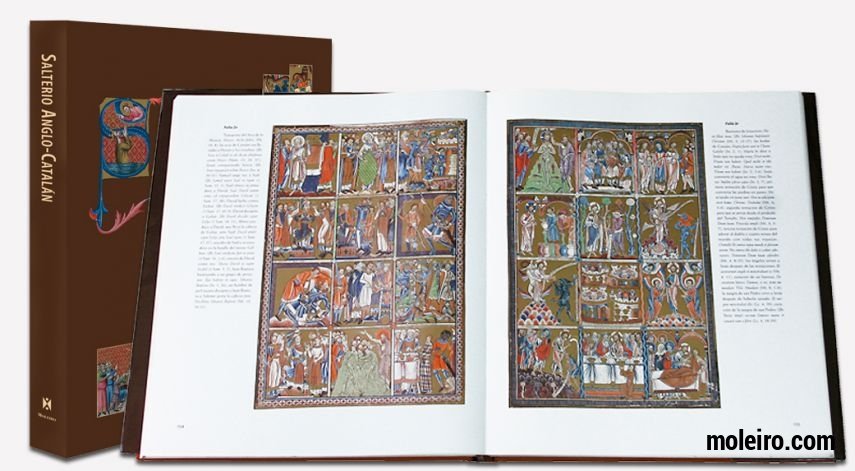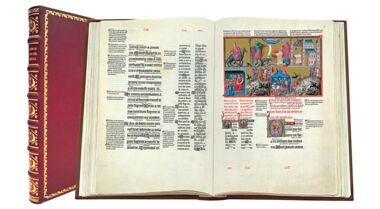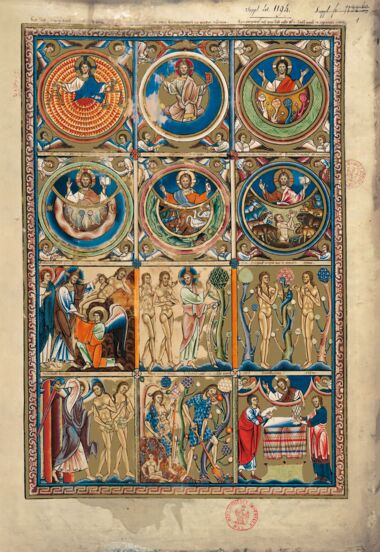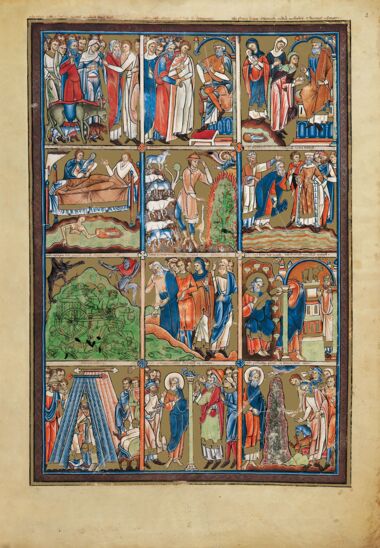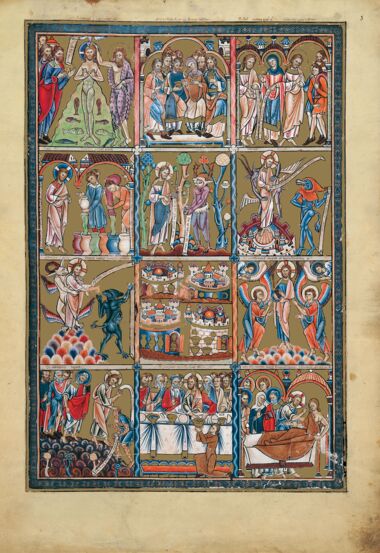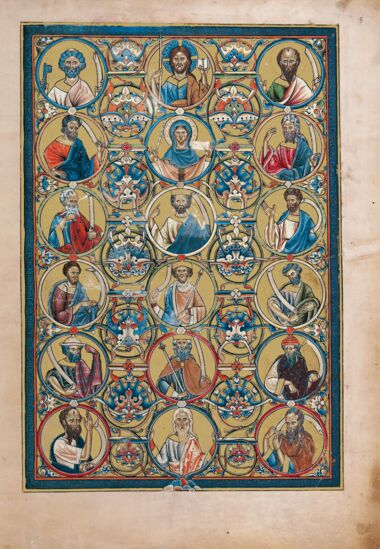This manuscript was illustrated in two different periods:
Canterbury, c. 1200: 184 pages. This first section follows the iconographic cycle of the Utrecht Psalter. It opens with what Leroquais called the Psalter prologue, consisting of 8 extraordinary, full-page miniatures, and continues with 52 fascinating miniatures measuring approximately 15 x 32 cm (width of the page) at the beginning of each Psalm. Most pages feature decorated initials.
Catalonia, c. 1340: from page 185 onwards we find 46 miniatures the width of the page and 15 to 25 cm high, surrounded by bright colours and divided into two or three bands each divided into two or three compartments. The few consisting of a single section appear on pages 328 and 340.
The miniatures on pages 144, 146, 160, 162, 164 and 172 are also by Ferrer Bassa, although these are of a rather different style and may have been painted by the Catalan artist upon a sketch that the English artist left unfinished (judging by the composition, the iconography based on the Utrecht Psalter, and the stylistic and technical factors including drapes and the constant use of a royal blue that subsequently disappeared... the decorated letters on these folios are all by the English miniaturist). The folios from 185 onwards are characterised by the great iconographic freedom of the typological interpretation of both the Psalms and the New Testament prophecies.
The miniatures are painted on deep red grounds with gold filigrees or upon burnished gold grounds.
28 historiated initials (usually a king, someone at prayer, Christ or the Virgin and Child) upon a deep red ground with gold filigree.
190 decorated letters upon a golden ground (usually two at the beginning of each Psalm and two smaller ones at the start of each of the last prayers) with plant motifs.
Some paintings in the second part reveal the participation of several Catalan artists from a single workshop. The architectural and plant details and motifs, and the dress and colour range employed are very homogenous, although certain stylistic variations indicate the participation of different artists.
The unfinished manuscript was transferred to Catalonia shortly after being made. It opens with a long prayer in Latin copied in a Catalan hand (14th – 15th C). The part painted by Ferrer Bassa was, in all likelihood, commissioned by Peter the Ceremonious.
The codex subsequently enriched the treasures in Jean de Berry’s library according to an inventory of the duke’s books and finest possessions. It may have been amongst the 78 manuscripts sold by Charles Croy in 1511 to the first female bibliophile in history, Margaret of Austria, regent of the Netherlands. When it arrived in Paris, the manuscript had a green velvet binding enabling it to be traced in Margaret of Austria’s different inventories (dated 1516 and 1523).
Along with most of Margaret of Austria’s books it was handed down to her niece, Mary of Hungary, Charles V’s sister. Following the death of the queen of Hungary it entered the general collection of the Burgundy library in Brussels. It is mentioned in the inventory drawn up 1615-1617 for Archduke Albert and Elizabeth. The manuscript left the Brussels library for Paris in 1796. The binding for Napoleon I took place in 1809.
